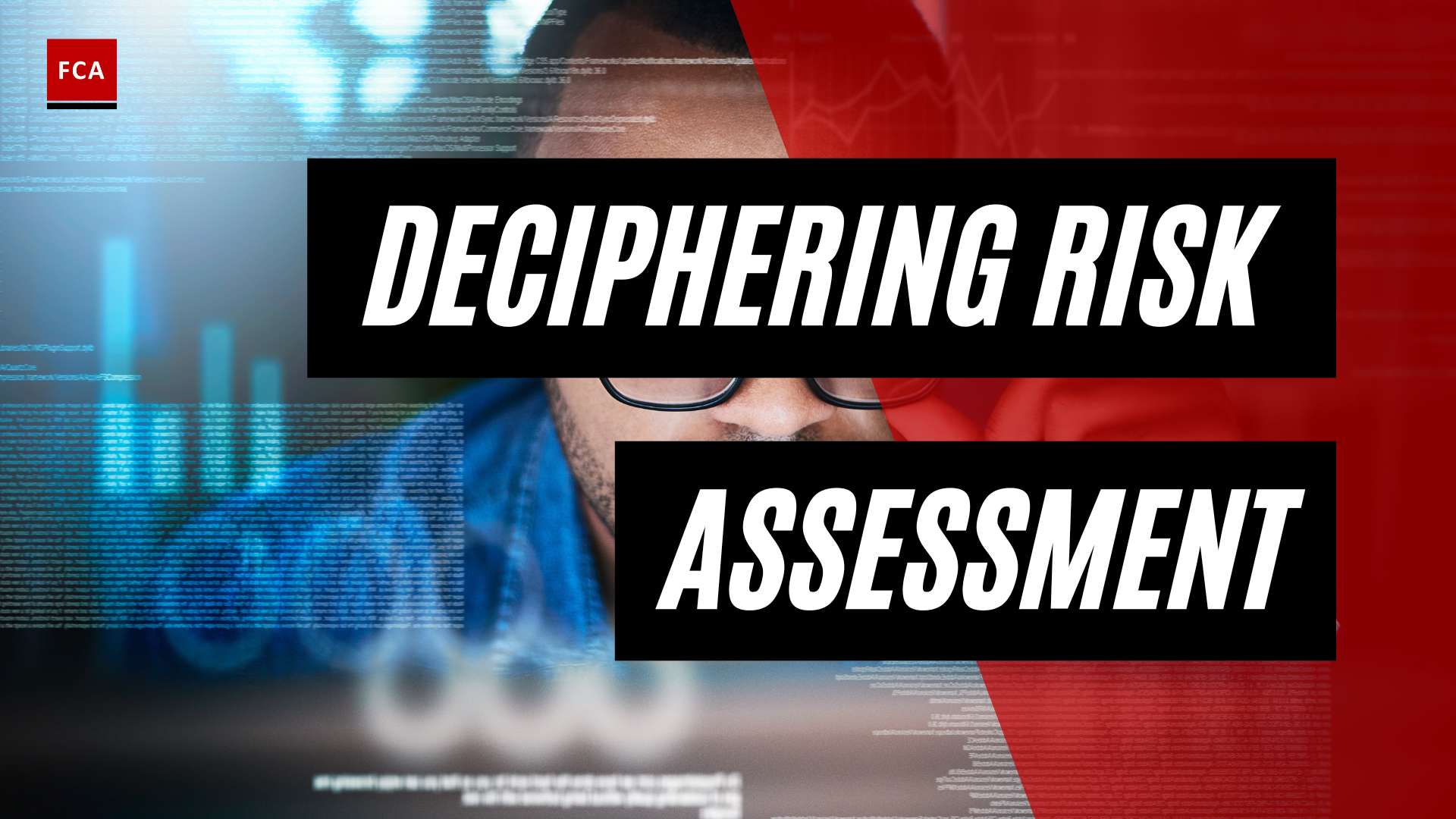AML Transaction Monitoring Software: Enhancing Compliance Efforts
In the realm of Anti-Money Laundering (AML) and financial crime risk management, the role of AML transaction monitoring software is paramount. This software plays a crucial role in detecting and preventing money laundering activities, ultimately enhancing compliance efforts. Let’s explore the importance of AML transaction monitoring, the challenges faced by traditional monitoring systems, and the role of artificial intelligence (AI) and machine learning in transaction monitoring.
The Importance of AML Transaction Monitoring
AML transaction monitoring is a vital component of a robust AML program. It involves the continuous surveillance of financial transactions to identify suspicious activities related to money laundering or terrorist financing. By leveraging rules-based scenarios, data collection, risk assessment, alert generation, and case management, institutions can effectively detect and report potential money laundering activities.
Transaction monitoring enables financial institutions to track and analyze a multitude of transactions, looking for patterns, anomalies, and red flags that may indicate illicit activity. It acts as a crucial line of defense against money laundering, helping institutions fulfill their regulatory obligations and protect themselves from legal and reputational risks.
Challenges in Traditional Transaction Monitoring Systems
Traditional transaction monitoring systems often face several challenges that can impede their effectiveness. One significant challenge is the high number of false alerts generated, leading to alert fatigue and resource inefficiency. False positives can be as high as 90%, resulting in significant costs in terms of manpower and time. Institutions need to dedicate extensive resources to manually review and investigate these alerts, diverting attention from genuine suspicious transactions.
Another challenge lies in the static, rule-based nature of traditional systems. Criminals have become increasingly sophisticated, finding ways to operate within predefined thresholds, thus evading detection. Static rules may fail to identify highly suspicious activities, leaving financial institutions vulnerable to money laundering risks.
Leveraging AI and Machine Learning in Transaction Monitoring
To overcome the limitations of traditional transaction monitoring systems, financial institutions are turning to AI and machine learning technologies. These advanced technologies bring significant enhancements to the detection capabilities of AML transaction monitoring software.
AI and machine learning algorithms can analyze vast amounts of transactional data, identifying complex patterns and anomalies that may indicate potential money laundering activities. By continuously learning from historical data and adapting to new trends, these algorithms can improve the accuracy of detecting suspicious transactions while reducing false positives.
The use of AI and machine learning also enables the identification of emerging risks and evolving money laundering techniques. These technologies can adapt and evolve alongside criminal behavior, providing financial institutions with a dynamic defense against financial crime.
By leveraging AI and machine learning, AML transaction monitoring software can enhance compliance efforts, streamline processes, and improve the overall effectiveness of detecting and preventing money laundering activities.
In the next section, we will explore the key features of AML transaction monitoring software, including real-time monitoring and detection, customization for risk-based approaches, and data management and validation.
Key Features of AML Transaction Monitoring Software
To effectively manage the risks associated with money laundering and other financial crimes, AML transaction monitoring software offers several key features that enhance compliance efforts. These features include real-time monitoring and detection, customization for risk-based approaches, and data management and validation.
Real-Time Monitoring and Detection
One of the primary advantages of AML transaction monitoring software is its ability to perform real-time monitoring and detection. By analyzing transactions as they occur, the software can promptly identify and flag suspicious activities, enabling financial institutions to take immediate action.
Real-time monitoring allows institutions to stay ahead of potential risks by swiftly detecting anomalies and unusual patterns in transactions. It enhances the institution’s ability to identify and investigate potential money laundering activities, ensuring compliance with regulatory reporting deadlines. The software’s real-time capabilities also support timely interventions to prevent further illicit transactions.
Customization for Risk-Based Approaches
AML transaction monitoring software can be customized to align with risk-based approaches recommended by regulatory bodies such as the FATF (Financial Action Task Force). This customization allows financial institutions to tailor the monitoring parameters to their specific risk profiles and compliance obligations.
By customizing the software, institutions can define rules and parameters that align with their risk appetite and compliance requirements. This customization ensures that the software generates relevant alerts based on the institution’s unique needs, minimizing false positives and streamlining the monitoring process.
Data Management and Validation
Effective data management and validation are crucial for the accurate and reliable functioning of AML transaction monitoring software. The software automates data management processes, ensuring that relevant data is captured, organized, and stored securely.
Data validation is an essential component of AML transaction monitoring. It involves ensuring the accuracy and integrity of the data used for monitoring and detection purposes. By implementing robust data validation processes, financial institutions can minimize the risk of corrupted or incomplete data affecting the accuracy and efficacy of the software.
With comprehensive data management and validation capabilities, AML transaction monitoring software enables financial institutions to maintain a reliable and accurate single source of truth for their monitoring activities. This ensures that the software operates effectively and provides accurate insights for identifying and mitigating potential risks.
By leveraging the key features of AML transaction monitoring software, financial institutions can enhance their compliance efforts and strengthen their ability to detect and prevent money laundering and other financial crimes. The software’s real-time monitoring, customization for risk-based approaches, and robust data management and validation capabilities contribute to effective risk management and regulatory compliance.
Best Practices for Implementing AML Transaction Monitoring Software
Implementing effective AML transaction monitoring software is crucial for financial institutions to ensure compliance with anti-money laundering regulations and detect suspicious activities. Here are some best practices to consider when implementing such software:
Establishing Transaction Profiles
Developing and maintaining transaction profiles is an essential best practice for transaction monitoring. These profiles should include specific details such as payment limits, frequencies, expected items, and amounts to effectively detect unusual transactions. Periodically testing transaction profiles within the AML/CFT infrastructure can help identify system weaknesses and improve the usability of such profiles (ComplyAdvantage).
Documentation and Record-Keeping
Documentation and record-keeping are crucial elements of the transaction monitoring process. Effective documentation should cover the reasons for selecting transactions for scrutiny, suspicious components, and any additional contributions from compliance officers and senior management. Maintaining comprehensive records is vital for creating a clear audit trail in the event of a money laundering investigation. Accurate documentation enables financial institutions to demonstrate compliance with regulatory requirements and provides evidence of due diligence (ComplyAdvantage).
Compliance with Regulatory Requirements
Regulators, both global and local, regularly update AML laws and regulations to protect institutions against evolving financial crimes like money laundering and terrorist financing. It is essential for companies to comply with these regulations, conduct transaction monitoring, and report suspicious activities through Suspicious Activity Reports (SAR) to the relevant authorities, such as the Financial Crimes Enforcement Network (FinCEN). Staying up-to-date with regulatory requirements is crucial to avoid financial penalties and reputational damage.
By following these best practices, financial institutions can enhance their AML transaction monitoring processes and improve their overall compliance efforts. Implementing AML transaction monitoring software that allows for customization, real-time monitoring, and effective data management can significantly contribute to mitigating risks associated with financial crimes, protecting reputations, and maintaining financial stability.
The Growing Market for AML Transaction Monitoring Software
As the need for robust anti-money laundering (AML) measures continues to rise, the market for AML transaction monitoring software has experienced significant growth. This section explores global market trends, the adoption of artificial intelligence (AI) in transaction monitoring, and Europe’s leading role in the AML software market.
Global Market Trends and Projections
The global AML transaction monitoring software market is projected to reach $2.1 billion by 2025, reflecting a compound annual growth rate (CAGR) of 12.5% between 2020 and 2025 (NorthRow). This growth is driven by the increasing emphasis on regulatory compliance and the rising number of financial crimes, including money laundering and terrorism financing.
Financial institutions are recognizing the importance of implementing advanced AML transaction monitoring software to detect and prevent suspicious activities. These software solutions leverage technology to analyze large volumes of transactional data in real-time and identify potential risks and anomalies. The integration of machine learning and AI algorithms enables more accurate detection and reduces false positives, enhancing the efficiency of compliance efforts.
Adoption of AI in Transaction Monitoring
The adoption of AI in AML transaction monitoring software is on the rise. AI-powered solutions are capable of analyzing vast amounts of data at a faster pace, enabling more accurate identification of suspicious patterns and behaviors (NorthRow). The use of AI algorithms helps improve the accuracy of risk assessments, enhances transaction monitoring capabilities, and reduces the burden of manual reviews.
Machine learning algorithms allow AML transaction monitoring software to continuously learn and adapt to new threats and evolving money laundering techniques. By analyzing historical patterns and detecting anomalies, these systems can detect suspicious transactions and generate alerts for further investigation. The adoption of AI in transaction monitoring is projected to grow at a CAGR of 15.6% between 2020 and 2025, expanding its market share (Sanction Scanner).
Regional Focus: Europe’s Leading Role
Europe is anticipated to hold the largest share of the AML transaction monitoring software market over the next five years (NorthRow). The region’s leading role can be attributed to the increasing adoption of advanced technologies to detect and prevent financial crimes.
European financial institutions face stringent AML regulations and must comply with the Fifth Anti-Money Laundering Directive (5AMLD) and the forthcoming Sixth Anti-Money Laundering Directive (6AMLD). To meet these requirements, financial institutions in Europe are investing in sophisticated AML transaction monitoring software that leverages AI and machine learning capabilities. These technologies enable more efficient and effective detection of suspicious activities, helping institutions stay ahead of evolving threats.
By leveraging AI and advanced technologies, AML transaction monitoring software is playing a pivotal role in combating financial crimes globally. The market’s growth, the adoption of AI, and Europe’s leading position highlight the increasing importance of these software solutions in the fight against money laundering and the preservation of financial integrity.
Benefits and Risks of AML Transaction Monitoring Software
When it comes to combating money laundering and ensuring compliance with anti-money laundering (AML) laws and regulations, AML transaction monitoring software plays a crucial role. This software helps financial institutions identify and report suspicious activities, protecting their reputations and financial stability.
Protecting Reputations and Financial Stability
One of the key benefits of AML transaction monitoring software is its ability to protect the reputation of financial institutions. By analyzing large volumes of transactions, the software can detect patterns and anomalies that may indicate money laundering activities or fraud. Timely identification and reporting of suspicious transactions help institutions uphold their commitment to combating financial crimes and safeguarding the integrity of the financial system (KyrosAML).
Moreover, AML transaction monitoring software helps financial institutions maintain their financial stability. By effectively monitoring transactions and detecting illicit activities, institutions can mitigate the risks associated with illegal financial activities and avoid financial sanctions. The software provides evidence and information to support enforcement actions in case of financial crime detection, enabling institutions to take appropriate measures and protect their financial standing (Sanction Scanner).
Potential Risks and Challenges
While AML transaction monitoring software provides significant benefits, there are also potential risks and challenges associated with its implementation. One of the risks is the possibility of false positives, where legitimate transactions are flagged as suspicious. This can lead to increased operational costs and unnecessary investigations. However, advancements in AI and machine learning algorithms have improved the accuracy of these systems, reducing false positives over time (KyrosAML).
Another challenge is the need for ongoing monitoring and updating of the software to keep pace with evolving money laundering techniques. Financial criminals continuously adapt their methods, making it essential for institutions to regularly update their AML transaction monitoring software to effectively detect new patterns and trends.
Additionally, the implementation of AML transaction monitoring software requires investment in technology infrastructure and staff training. Financial institutions need to ensure that they have the necessary resources and expertise to effectively implement and maintain the software.
By carefully considering the benefits and risks associated with AML transaction monitoring software, financial institutions can make informed decisions about its implementation. The advantages of protecting reputations, maintaining financial stability, and complying with AML regulations outweigh the potential risks and challenges. With the right software and proper implementation, institutions can effectively mitigate financial crime risks and contribute to a safer financial environment.
AML Transaction Monitoring: An Essential Tool for Compliance
In the realm of anti-money laundering (AML), effective transaction monitoring is of utmost importance to financial institutions. AML transaction monitoring software plays a crucial role in tracking financial transactions, ensuring compliance with AML regulations, and mitigating financial crime risks.
Importance of Tracking Financial Transactions
AML transaction monitoring involves the process of monitoring financial transactions to identify suspicious activities related to money laundering or terrorist financing. By leveraging rules-based scenarios, data collection, risk assessment, alert generation, and case management, institutions can effectively detect money laundering activities. Tracking financial transactions allows financial institutions to identify patterns, anomalies, and potential red flags that may indicate illicit activities.
Comprehensive transaction monitoring enables institutions to detect and report suspicious transactions to the appropriate regulatory authorities. It helps prevent criminals from exploiting financial institutions for money laundering or terrorist financing purposes. By implementing robust transaction monitoring systems, financial institutions can uphold their commitment to combatting financial crime while maintaining the integrity of the global financial system.
Compliance with AML Regulations
Compliance with AML regulations is a critical requirement for financial institutions worldwide. AML transaction monitoring software plays a vital role in helping institutions meet these regulatory obligations. It allows institutions to implement risk-based approaches recommended by the Financial Action Task Force (FATF). Through the use of advanced algorithms and technology, AML transaction monitoring software aids in identifying and analyzing potentially suspicious transactions.
By utilizing AML transaction monitoring software, financial institutions can group customers based on risk levels. This risk-based approach enables tailored monitoring measures for high-risk groups and simplified measures for lower-risk groups. Compliance with AML regulations not only helps institutions avoid substantial fines for non-compliance but also reinforces their commitment to combating money laundering and terrorist financing activities (ComplyAdvantage).
Mitigating Financial Crime Risks
The primary goal of AML transaction monitoring is to mitigate financial crime risks. Financial institutions face increasing challenges in identifying and preventing money laundering activities. AML transaction monitoring software, powered by artificial intelligence (AI) and machine learning technologies, significantly enhances the detection capabilities of financial crimes like money laundering.
By analyzing vast amounts of transactional data in real-time, AML transaction monitoring software can identify suspicious activities more accurately and efficiently. It aids in detecting patterns, anomalies, and other indicators of potential money laundering or terrorist financing activities. This proactive approach enables institutions to take appropriate actions, such as filing suspicious activity reports (SARs) and conducting further investigations, to prevent financial crimes from occurring.
Mitigating financial crime risks through effective AML transaction monitoring not only protects the reputation and financial stability of financial institutions but also contributes to the overall integrity of the global financial system. By actively detecting and deterring illicit financial activities, institutions play a vital role in safeguarding the economy and maintaining trust in the financial industry.
AML transaction monitoring software provides financial institutions with a powerful tool to track financial transactions, ensure compliance with AML regulations, and mitigate the risks associated with financial crimes. By harnessing the capabilities of advanced technologies and adopting best practices, institutions can strengthen their AML frameworks and contribute to a more secure and transparent financial environment.
Overcoming Challenges in AML Transaction Monitoring
To ensure effective risk management and compliance with anti-money laundering (AML) regulations, organizations must address the challenges associated with AML transaction monitoring. This section explores three key challenges and strategies for overcoming them: reducing false alerts in traditional systems, embracing advanced technologies, and ensuring data accuracy and integrity.
Reducing False Alerts in Traditional Systems
Traditional transaction monitoring systems often generate a high number of false alerts, resulting in significant costs in terms of manpower and time. False positives can reach levels as high as 90%, which can overwhelm compliance teams and hinder their ability to focus on genuine suspicious activities.
To tackle this challenge, organizations can adopt advanced technologies such as artificial intelligence (AI) and machine learning. By leveraging these technologies, transaction monitoring systems can enhance detection capabilities and reduce the risk of criminal operations going undetected. AI-powered systems can analyze patterns and anomalies more effectively, enabling accurate identification of suspicious activities while minimizing false alerts.
Embracing Advanced Technologies
The limitations of static, rule-based transaction monitoring systems have become evident in the face of sophisticated criminals who operate within predefined thresholds. To combat this, organizations must embrace advanced technologies to enhance their detection capabilities.
Implementing AI and machine learning algorithms can significantly improve the effectiveness of transaction monitoring systems. These technologies enable real-time processing and analysis of large volumes of data, allowing organizations to swiftly detect suspicious patterns or anomalies. By continuously learning from new data and adapting to emerging threats, AI-powered systems can stay ahead of sophisticated money laundering schemes.
Ensuring Data Accuracy and Integrity
To leverage the power of AI effectively in transaction monitoring, organizations must ensure a reliable and accurate single source of truth for their data. The quality and integrity of data are vital for the accuracy and efficacy of AI-powered transaction monitoring systems.
To achieve this, organizations should establish robust data management processes. This includes careful data collection, validation, and cleansing procedures to minimize the risk of corrupted or incomplete data adversely affecting the accuracy of AI algorithms. By maintaining data accuracy and integrity, organizations can enhance the effectiveness of their AML transaction monitoring efforts.
Overcoming the challenges in AML transaction monitoring requires a comprehensive approach that combines advanced technologies, tailored risk-based approaches, and strong data management practices. By reducing false alerts, embracing AI, and ensuring data accuracy, organizations can enhance their ability to detect and mitigate financial crime risks effectively. Implementing these strategies contributes to strengthening AML compliance programs and safeguarding financial institutions against money laundering, fraud, and other illicit activities.









